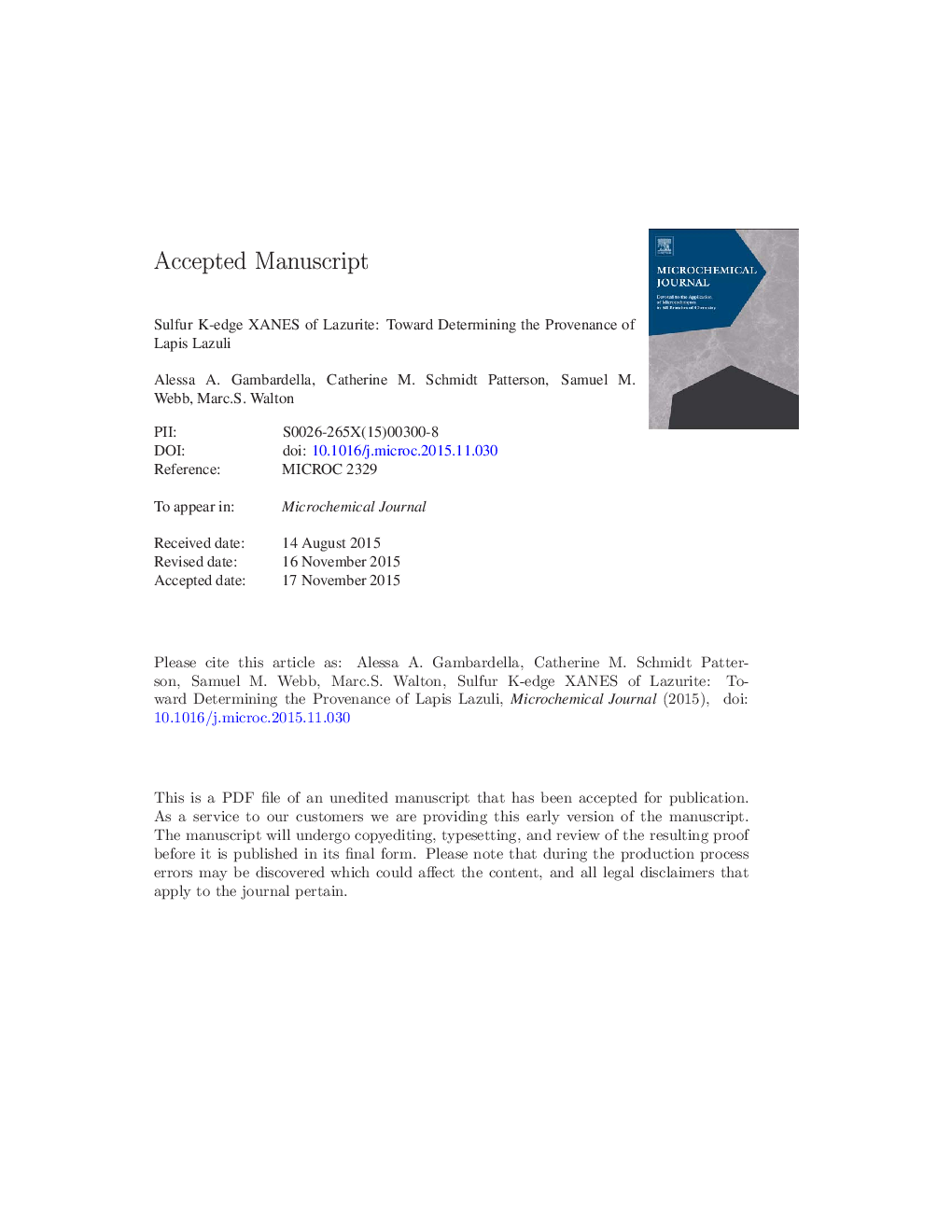| Article ID | Journal | Published Year | Pages | File Type |
|---|---|---|---|---|
| 7641764 | Microchemical Journal | 2016 | 18 Pages |
Abstract
Lazurite, the blue mineral found in lapis lazuli, may be a marker for the identification of provenance. Sulfur K-edge X-ray absorption near edge structure spectroscopy (XANES) of lazurite from lapis lazuli of various locations, such as Afghanistan, Russia, Chile, the USA, Iran, Tajikistan, and Myanmar, is described. The XANES spectra reveal that several different sulfur chemistries exist within lazurite, attributed to contributions from multiple sulfur species. A peak at 2482.5Â eV is attributed to sulfate; an envelope of peaks between 2470 and 2475Â eV is attributed to polysulfide radicals, polysulfide dianions, neutral sulfur, and/or thiosulfate; and a peak at 2469.1Â eV is attributed to the trisulfur and/or disulfur radical(s). Also, a peak of unknown origin arises at 2466.3Â eV in several spectra. The spectral profile for the envelope of peaks (2470 to 2475Â eV) varies between samples and in some instances, within a sample. Most notably, the studied samples from Chile display two distinct peaks near 2471.7 and 2473.5Â eV with a local minimum at 2472.5Â eV, unlike the most commonly observed pattern-that typically observed for samples from Afghanistan-with a single maximum intensity near 2472.5Â eV. Other more subtle variations in this energy range also correlate with provenance at varying degrees.
Related Topics
Physical Sciences and Engineering
Chemistry
Analytical Chemistry
Authors
Alessa A. Gambardella, Catherine M. Schmidt Patterson, Samuel M. Webb, Marc S. Walton,
